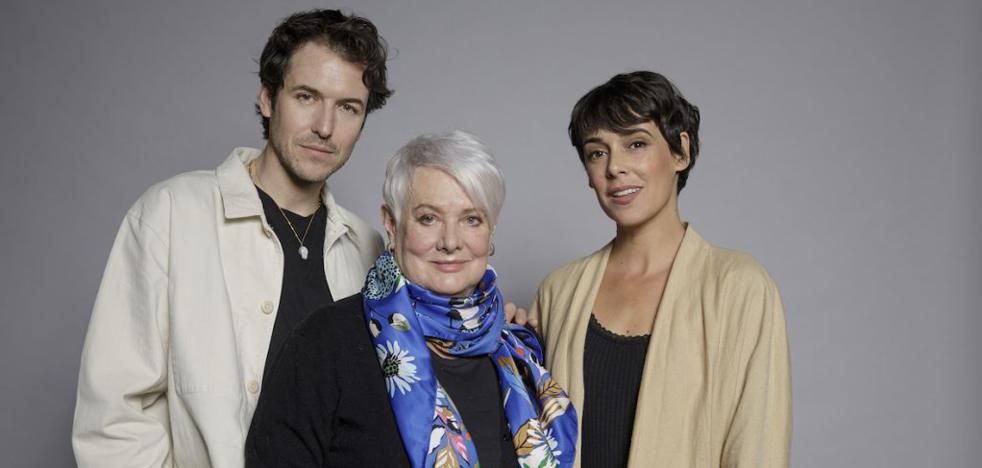The architect Mónica Martínez Vicente personalizes funerary steles that reflect the deceased’s personality, practices, and tastes to elicit smiles from those who visit them and lessen the harshness of death.
Can the remains of our loved ones rest in a personalized space, similar to their tastes and customs in life? That is what the architect Mónica Martínez Vicente (Las Palmas de Gran Canaria, 1979) from Murcia offers in the Memoory project, dedicated to the creation of tombstones and urns to bury or store the ashes of our deceased in a container that reflects their personality. , his hobbies or his will.
In 2016, the architect from the region of Murcia lost a relative who hated cemeteries, who did not like death, or religious symbolism and crosses, or the cold of marble… «I knew he would have liked to be buried in his orange grove, where he used to read and whom he was very fond of,” he tells LA VERDAD.
With the wish that the remains of the deceased relative rest in an “appropriate” place and with the intention that this space is closest to that person in life, Martínez Vicente began to explore the possibilities of creating a personalized headstone and came up with an orchard with a tree in corten steel. “He liked metalworking – he points out – and I knew that Corten steel, when it oxidized, resembles the soil of an orange grove. So I designed the standing tree and its shadow in the grass.”
The tomb is located in the Nuestra Señora de la Consolidación cemetery in Molina de Segura and arouses great interest among visitors. The epitaph chosen was ‘Under the shade of my orange tree’. “I wanted it to feel like it was in the orchard,” says the architect.
Mónica Martínez Vicente took this first work and experience to an architecture blog, which received many proposals and requests. “For example, there are those who want a beer tap on their grave, others a dance floor… Of course very curious and funny things,” he says with a laugh. Thus Memory was born. «I attended funeral fairs and conferences and, among other things, formed the way of thinking about people, professions, hobbies».
In 2019, at the second edition of the international funeral fair Miami Funeral, Memoory won first prize in the digital media category at the Funeral Advertising Festival for a short film about funeral communication, made with Murcian brothers Pedro and Juan Poveda, from Twin Freaks Studio production company. “The tombstone that appeared in that short film was what I called ‘Surf’ [una tabla de surf enre las olas] and the message was: why does everything have to be so gray or black, sad and painful, if we know from the moment we are born that we are going to die». What if I can do something to remember that person in a positive way? It is clear that pain exists, but the essence of the person is brought out in a positive way,” the architect summarizes the short film and the purpose of her daring designs.
For Mónica Martínez, death is the end of physical life. “Do we know what lies behind it?” he wonders. “For me, that person’s life does not end, so I only intend to prolong his life in a positive way. Recalling what he loved to do and that when he goes to the cemetery instead of arousing sadness, he arouses a smile. With his proposals he wants to “remove the hardness of death” and the process of losing a loved one. He believes that death is “the beginning of memories, to appreciate the person and his history” “The cemetery is full of people, but we don’t know anyone’s story. These tombstones tell us, if very little, about every deceased person,” he says.
The works of this architect are ‘vitalistic’ and with ‘another vision on death and the grieving process’. His designs incorporate new materials such as glass and ceramics. Sometimes he also uses ordinary materials such as stone, marble and metal, but he leaves behind dark colors and uses bright colors “that convey other sensations and make one forget that one is in a cemetery”, he emphasizes.
Among his creations stands out an urn of ashes containing seeds of trees or plants that the deceased liked and when buried, these species grow. Another innovative element he introduced in a tombstone is a QR code. In this case, the deceased was a musician, by scanning the code you can read his biography and listen to one of his favorite songs. In addition, the epitaph on this tombstone reads: ‘Where the music sounds you will find me’.
The architect studies the possibility of taking care of everything that has to do with the farewell of a deceased person. From the design of the urn or headstone to the organization of the funeral that tries to break through the presence of such a strong pain. “Make the farewell different, even call the funeral another name.” “For example, spending a day with family and friends, practicing a sport they like or listening to their favorite music… suffering,” he emphasizes.
He would also like to be able to collect people’s wills before his death in connection with his funeral and farewell: “People can design their headstone or ashtray before they die.”
A deceased’s sister decided to pay tribute to him three years after his death by moving his remains. The architect, as her client explained, says he was a happy, strong boy, passionate about nature, “hence the green of the windows” and the snow-capped mountains. “Hence the contrast to the rest of the white box.”
Five series can be found in the Memory tombstone catalogue. ‘Air’ is for niches, based on a colored thermo-lacquered metal base or Corten steel (oxidized effect) in which a simple drawing, letters or dates are cut out, revealing a colored glass background. The ‘Water’ series consists of two layers, the metallic exterior in which a more detailed drawing or landscape is cut and a layer of colored tempered glass or glass printed with a personal image. These tombstones can be placed in homes.
“Fire” (fire) is the most conceptual line. Their tombstones are more up to date with contemporary life. For example, one can imagine a renewed cross, the rose of the wind, a frozen dream or the moon so characteristic of Arab culture.
‘Earth’ is a continuation of the ‘Fire’ series, produced with almost precious natural stones from more exclusive quarries supplemented with designs in metal pieces. Those of ‘Light’ are raised so that they are illuminated or backlit when the sunlight falls. A sunset, a vigil with a candle lantern or a permanent lamp, the stars that shine at night.
Source: La Verdad
I am David Jackson, a highly experienced professional in the news industry. I have been working as an author at Today Times Live for over 10 years, and specialize in covering the entertainment section. My expertise lies in writing engaging stories that capture readers’ attention and deliver timely information about the latest developments.



